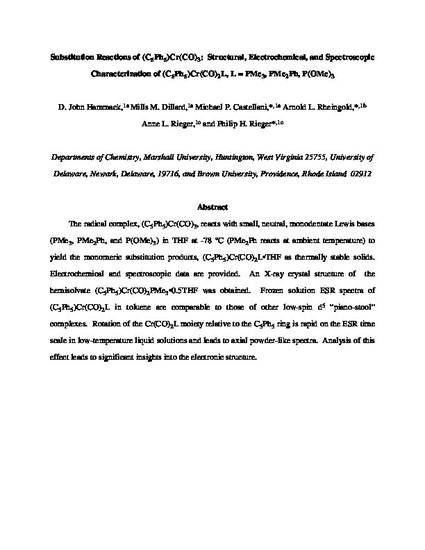
The radical complex (C5Ph5)Cr(CO)3 reacts with small, neutral, monodentate Lewis bases (PMe3, PMe2Ph, P(OMe)3) in THF at −78 °C (PMe2Ph reacts at ambient temperature) to yield the monomeric substitution products (C5Ph5)Cr(CO)2L·THF as thermally stable solids. Electrochemical and spectroscopic data are provided. An X-ray crystal structure of the hemisolvate (C5Ph5)Cr(CO)2PMe3·0.5THF was obtained. Frozen-solution ESR spectra of (C5Ph5)Cr(CO)2L in toluene are comparable to those of other low-spin d5 “piano-stool” complexes. Rotation of the Cr(CO)2L moiety relative to the C5Ph5 ring is rapid on the ESR time scale in low-temperature liquid solutions and leads to axial powderlike spectra. Analysis of this effect leads to significant insights into the electronic structure.

This is the authors’ peer-reviewed manuscript. The version of record is available from the publisher at http://dx.doi.org/10.1021/om960374u. Copyright © 2018 American Chemical Society. All rights reserved.